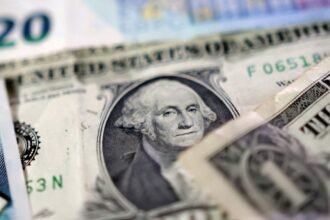The US dollar is on track to post its strongest weekly performance in nearly three years, buoyed by a confluence of geopolitical developments, tariff hikes, and divergent central bank policies, according to a Reuters report.
At the center of the dollar’s rally is the latest salvo in global trade tensions. President Donald Trump’s administration recently announced sweeping new tariffs on multiple countries, triggering market volatility and pressuring foreign currencies. Among the affected nations, Switzerland now faces a steep 39% tariff, while Canada is contending with a 35% import duty. The announcement rattled forex markets, sending the Swiss franc tumbling to a six-week low and driving the Canadian dollar toward its seventh straight weekly decline.
“The dollar is benefitting from a classic flight-to-quality trade, as investors brace for the economic implications of these abrupt protectionist moves,” said a senior forex strategist at a major investment bank.
However, trade policy isn’t the sole driver of the dollar’s momentum. Another major contributor is Japan’s monetary stance. The Bank of Japan, in a closely watched policy update, reaffirmed that it has no immediate plans to raise interest rates, even as other major central banks consider tightening. The dovish tone caused the yen to weaken notably, further boosting the dollar. Japan’s Finance Minister publicly voiced concerns over “excessive and abrupt” currency movements, suggesting Tokyo may be inching closer to intervening verbally—or even directly—to stabilize the yen.
In contrast, the U.S. Federal Reserve is maintaining a measured approach. Despite sustained pressure from President Trump to cut interest rates, the Fed has so far resisted, citing steady inflation and a resilient labor market. This stance has reassured markets about the underlying strength of the U.S. economy, even amid escalating global trade frictions.
While inflation remains contained, investor sentiment appears anchored by confidence that tariffs—though disruptive—won’t necessarily derail U.S. economic growth. The upcoming non-farm payrolls report is projected to show modest job gains, reinforcing the Fed’s wait-and-watch





















